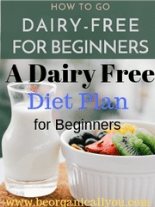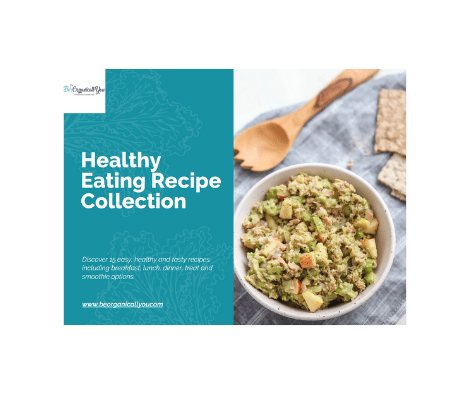20 Excellent Everyday Health Tips Women Will Fall in Love With

Health Tips
Everyone wants to be healthy, don’t they? The problem is that many of us have no idea how to do it. Keep reading to find 20 everyday health tips for women.
Master Calorie Counts
Get an app or one of those little calorie counter books, which are easier to use and begin to check calorie counts of everything you eat, especially the decadent items.
Before long, it will become committed to memory and you will become an expert in calorie counts of many foods, which allows you to quickly assess your day’s intake so you can make the smartest choices you can.
Inspect Your Plate
A key health skill is to check your plate. Every meal should include a healthy protein, healthy carbs, and healthy fat. What’s on your plate?
Example of a healthy plate: chicken breast (protein), quinoa with fresh tomatoes, spinach, and onions or a fresh and colorful vegetable salad (healthy carbs), and ½ an avocado or extra virgin olive oil for the salad (healthy fat).
Master The Art Of Reading Food Labels
Mastering the skill of reading and understanding food labels can save your waistline and your life. Read the labels of all foods you pick up from the shelf, as this will enable you to see what you are putting into your body.
The “low fat” or “low-carb “ food labels in the market today will capture buyer’s attention but unfortunately, these claims are often misleading marketing ploy and tell you little about the nutrient value of the food is or more importantly its ingredients.
This is one of the best reasons to eat whole food, there are no labels required because what you see is what you get, all-natural food made by nature, and not in a factory.
Anatomy of A Food Label
Serving Size And Serving Size Per Container
- This one is very important and is often confused.
- Serving Size is the amount of food in one serving
- Servings Per Container is the number of servings in the whole package of the product
- All data supplied on the nutritional factors pertain to the Serving Size and not Servings Per Container.
- For example, if a whole bag of chips is 12 ounces, and 1 ounce is listed as the serving size, this means that servings per container are 12. Therefore, if the calorie count reads at 150, this is per each 1-ounce serving, and the entire bag has 1800 calories. Big difference!
Calories From Fat
This reading lets you know how many calories in the product are from fat.
Percent Daily Value
The % Daily Value (%DV) is the percent of nutrients in the serving size based on the recommended daily allowance for the entire day for adults. The * at the bottom of the label lets you know that %DV is based on the average adult 2,000 calorie diet.
- %DV is the measure of nutrients you are receiving on a scale of 0 to 100, so for example, if a food has a reading of 5% fiber, this means that you still have 95% left unfulfilled for the day.
- 5% or less = a low source of the particular nutrient
- 10 – 19% = a good source of the particular nutrient
- 20% or more = a high source of the particular nutrient
- 40% and more = a super high source of the particular nutrient
Look At The Bottom Of The Label
The vitamin and mineral counts and their %DV is an important determinant of the nutritional benefits of any given food.
Total Fat
Total fat is the number of grams of fat per serving in the food. Proper fat intake is critical to good health, especially for the heart and the brain making this reading one of the most important.
The different fats listed on the label are of most importance as they help you assess the quality of the fats in the food including:
- Unsaturated – best – eat more
- Listed as monosaturated and/or polyunsaturated
- Saturated – in moderation – eat less
- Trans Fat – worst – eat none
Cholesterol And Sodium
Both are important readings as too much of either one greatly increases risks for heart disease.
Total Carbohydrates
Sugar and dietary fiber are two types of carbohydrates, both of which are important considerations for your good health and your waistline.
Note that sugar has no %DV because there is no recommended daily value for sugar, as it is not considered a nutrient nor is it required by the body. The more sugar a food has the more fattening it is, and the more it increases risks for type 2 diabetes.
Fiber is key for heart health, healthy digestion, healthy blood sugar levels, and keeping your waistline trim. Typically, high fiber foods are considered very healthy.
Check Ingredients
Besides looking at nutritional values, it is important to look at the ingredients. Ingredients are listed in order of quantity, from highest to lowest. For example, if sugar is listed as the first ingredient, this means the food has more sugar than anything else.
Many Foods Contain Hidden Dangers
For example, TRANS FATS will be listed as hydrogenated oil on the label. The government only mandates that food manufacturers have to list trans fats on the fat content portion of the label if they contain more than .5 grams, in the case with foods that contain less, assessing trans fat content can only be achieved by looking at ingredients.
Another one to look out for is SUGAR, which may be listed as a fourth or even last ingredient, but sugar is also represented by other names, such as corn syrup, high-fructose corn syrup, barley malt syrup, and others.
SALT is another one represented by various ingredients such as sodium benzoate, monosodium glutamate (MSG), or disodium.
Look out for ARTIFICIAL INGREDIENTS AND FLAVORS. You do not want to consume a product made in a science lab, as these harsh chemicals may negatively affect your health.
The Fallback Quick And Easy Healthy Food Prep
Every woman wants to adopt healthy eating habits but this can become difficult in a busy and hectic life. How many times have you had a horrid day and went through the drive-thru because you had nothing prepared at home? Sometimes, maybe often, you just lack the energy to fix a healthy meal, and this the time where you are most likely to make bad decisions about food choices.
This is the time you need to have fallbacks that require minimal effort. Here are some techniques that will ensure you have meals that are healthy and easy to prepare. Consider meal prepping as well.
- Freeze Backups – Cook up some healthy meals on the weekends and freeze them for use during the week. This way, when you come home from work feeling exhausted, fixing a healthy meal will be a quick business.
- Use Your Crock-Pot – Crockpots are great tools and you can have a hot healthy meal fresh and ready when you get home every day of the week.
- Keep salad ready in the fridge. Place your ingredients in food containers and you only have to toss it when you get home.
- Have Easy Breakfast Options – Have multiple healthy breakfast options that can be used for breakfast. For example, instant steel cut oats, egg whites in a carton (easy to open and pour products are available), fresh fruit that you can eat on the go, including apples, oranges, and bananas or pre-prepped varieties.
Create A “Fight Cravings” Plan
That great desire to eat a certain kind of food (aka craving) is one of the main reasons why people are battling lifestyle diseases, including heart disease and obesity. The good news is that there are ways to suppress your cravings.
- Avoid starvation and desperation – Starvation is the key reason people get and give in to cravings as blood sugar levels drop and your desperation takes over making it very difficult to resist cravings that typically result in massive overeating. Eat small meals every 3 hours to keep your hunger stable and in check, and your mind focused and in control.
- Add more protein and fiber to your diet – Eating protein and fiber reduces cravings by keeping you full longer and maintaining stable blood sugar levels and this, in turn, prevents you from overeating. This is a healthy sure way of reducing your appetite and killing cravings.
- Have a meal timetable – By sticking to a regular eating schedule, you always know when your next meal will be.
- Avoid stress – Stress could cause you to have cravings and greatly affect how and what you eat. Stress is one of the key problems behind emotional eating. This commonly affects women, as stressed women tend to take in more calories than women who manage their stress.
Keep A Healthy Snack List
It is easy to forget good healthy snacks that we enjoy, so why not keep a handy list to use for shopping and in your purse for when you are out and about.
Good Choices Include
- Raw or dry roasted nuts
- Berries
- 1 ounce of 60% cacao chocolate
- Raw or dry roasted seeds
- Carrot and celery sticks and other fresh vegetables
- Healthy protein bars
The 5-Minute Sodium Check
Lowering your sodium intake improves your health significantly. The American Heart Association reports that Americans eat way more salt than they should. Too much salt in your diet could lead to hypertension that in turn leads to heart disease. Hypertension eventually leads to damage of the kidneys, heart, brain, and eyes.
A quick and easy way to assess your salt intake is to consider the foods eat in any one day or week. If you eat a clean diet that is filled with whole real food, then you have little to worry about. The natural salt content in whole food is minimal and should be the main source of your salt intake. Additionally, fresh fruits and vegetables are also rich in potassium that counters the negative effects of high sodium chloride levels in your body.
If you are eating out a lot or consuming many processed and junk foods then it’s time to count your sodium intake. These foods are the major culprits of high sodium levels in modern diets.
Keep An Antioxidant Go-To List
Antioxidants prevent oxidative stress that accelerates aging and causes premature aging that shows on the skin, therefore the best wrinkle and anti-aging skincare defense are to maintain a diet plentiful in key antioxidants.
Antioxidants also help fight free radicals that cause cancer, boost immunity, brainpower, and heart health.
Keep a handy list and make sure you get these foods in your diet daily. Once you get into the habit of eating these foods, you will no longer need to refer to that list.
List of Antioxidant Foods
Here are some top choices:
- Berries: wild blueberries, cranberries, raspberries, strawberries, and blackberries
- Citrus fruits: oranges, grapefruits, and bell peppers
- Artichokes
- Apples
- Plums
- Red grapes
- Tomatoes
- Kale
- Spinach
- Beets
- Broccoli
- Onions
Spices and Herbs
- Cloves
- Cinnamon
- Thyme
- Tarragon
- Oregano
- Sage
- Turmeric
The 5-Second Urine And Stool Test
Check your stool for blood regularly. This can indicate numerous conditions, from the minor hemorrhoids to the more serious colon cancer. If you see blood make an appointment with your doctor immediately.
Check your urine color regularly. Urine color is a good indicator of dehydration. If it is dark or very dark yellow, it means you need to drink more water. Light, almost clear urine is an indicator of proper hydration.
The body loses water daily through sweat and urination, and so you need at least six glasses daily. Filtered water is generally healthier, and depending on where you live, your tap water may not be ideal for consumption but can be filtered. There are many options infiltration, including faucet-mounted and carafe filters.
Master The 10-Minute Workout
No matter how busy you are, you can surely squeeze in a 10-minute workout session into your tight schedule. Never underestimate the power of the 10-minute workout that can boost your energy levels by 18% and burn 100 or more calories.
Exercises that would give you this kind of results include:
- Sprinting or walking upstairs
- HIIT routines
- Squats, pushups, and other bodyweight moves
The 5-Minute Stress Test
Each day, or at the very least a few times a week, it is important to check your stress levels. Stress kills, and it hinders your emotional and mental health and quality of life.
Everybody, literally every single person on the planet can and does experience stress. Some people experience more stress than others do and how people handle stress varies greatly on an individual basis.
But, what does that look like? How can you tell if you are going through more than normal amounts of stress?
The 5-Minute Stress Test
Check yourself for these symptoms:
- Excessive eating (especially junk food), drinking, or smoking
- Trouble sleeping or focusing
- Being irritable, snappy, or short especially with those closest to you
- Increase in the number of colds or other illnesses you contract
- Body aches and pains without a known source
- Health problems such as eczema, acne, high blood pressure, high cholesterol, and others
- Feelings of general anxiety and depression
- Experiencing feelings of insecurity with money, employment, and relationships
10 Minutes Of Quiet
Meditation has some life-changing powers that every woman deserves. It boosts your heart health, concentration, decreases stress, and lifts your mood. Most women lack the commitment to this practice because it feels like a hassle, but it does not need to be a long-drawn-out event.
Sitting anywhere in complete and total quite for 10 minutes each day can greatly improve your health. Meditation and silence protect you from beauty burglars such as stress. It promotes calm, peace, focus, and total wellness of mind, body, and spirit. Try it!
Daily Happiness Test
Check-in with yourself every day as to how much happiness and joy you experienced during your day. If you must, keep a list of the little things that make you happy and follow it on all your days.
Smiling and giggling will lift your mood, helping you to better manage the stress that can lead to heart disease, insomnia, high blood pressure, and reduced quality of life. Happiness is uplifting and refreshing, it makes you better able to handle all that life throws at you and greatly improves your overall wellness and quality of life.
High levels of the stress hormone cortisol can lead to higher risks of autoimmune diseases, sluggish metabolism, spikes in blood sugars, junk food cravings, and declines in DHEA levels, the hormone that regulates sex and other preventable conditions.
Laughter promotes happiness and happiness supports physical, mental, and emotional health. Happiness is one of those things that eludes many people, but can easily be found every single day in the simplest things.
For some it’s taking a walk outside and smelling the fresh air, fresh-cut grass, or roses, others find it in the joke of the day. Simply taking a few moments each day to enjoy something you like to do will boost levels of joy and happiness. The key is to take the time to do it and use this health skill to your advantage.
Your physical well-being is highly dependent on your psychological well-being so be happy!
Create A Sleep Ritual
Getting good rest is essential for your health. Many suffer from insomnia and lack the quality sleep they need.
Create a nightly ritual so that your body becomes accustomed to the cues for sleep. This can include things like taking a hot bath, reading a book, lighting aromatherapy candles, or diffusers.
The benefits of getting a good night’s sleep are countless, here are just a few:
- Improved health – Inadequate sleep puts you at risk of heart disease, diabetes, and weight gain
- Great sex life – According to a study carried out by The National Sleep Foundation, 26% of people blame inadequate sleep for their struggling sex lives. If you are always tired, sex is the last thing on your mind.
- High spirits – when you do not get enough sleep, chances are that you may be irritable and super cranky.
Flossing “To Go”
Carry with you portable floss sticks, which are small and easily fit into your purse. Make a habit out of using these to floss and clear debris from between your teeth after every meal.
In general, good dental hygiene habits that every woman should know and practice include:
- Brushing your teeth after meals
- Flossing at least once every day
- A dental checkup every six months
Sound oral health contributes a great deal to overall health and may prevent serious medical conditions. For example, flossing helps remove bacteria that may be lying under the gum line, which when left unremoved, may lead to heart disease.
Breast Self-Exam
It is recommended that every woman carry out breast self-exams monthly to check for any unusual changes or lumps that may indicate breast cancer. These self-exams save on costs and time, as you do not have to book a doctor’s appointment every month. Self-exams can help detect any problems early, and early detection saves lives. Ask your doctor to teach you how to do it properly.
The 5-Minute Skin Health Boost
Exfoliation only takes minutes twice a week, and this process of removing dead skin cells is an essential element in a sound beauty regimen and also greatly supports the health of your skin.
What Exfoliation Does
- Smooths the skin on the face, knees, and elbows
- Promotes moisture
- Allows the skin to better absorb creams and lotions
- Reduces breakouts of acne
- Reduces the appearance of age spots and dark spots
- Minimizes large pores
- Prevents ingrown hairs
- Smooths razor bumps
- Reduces stress
There are many fine exfoliant products on the market, including those made for specific skin types such as acne-prone skin. You can also make your own facial and body scrubs using all-natural ingredients such as olive oil blended with sea salt or sugar.
Keep Natural Remedies On File
You do not always have to go see a doctor for minor health problems, such as the flu, heartburn, colds, or cuts. Save money and time by keeping a list of natural healing home remedies.
- For heartburn or acid reflux, try ginger root tea. Slice some ginger and let it simmer in water then strain out the water and drink it 20 minutes before a meal. Alternatively, you could add a teaspoon of baking soda to a cup of water and drink. This neutralizes the acid in your stomach.
- For flu relief – The classic home cure of garlic, lemon, and honey is a favorite and a natural flu healer. Mash a clove of garlic in a cup, add lemon juice, add some honey, and top it off with warm water. Drink up and feel better fast. Congestion can be alleviated with netty pots and inhaling steam.
- For minor cuts and bruises – Coconut oil will do. It has anti-inflammatory and antibacterial healing properties. It also prevents scarring and this makes it a plus for women. You will need to clean the injured area first then gently apply the coconut oil with a cotton ball then cover with a bandage. Repeat this 2 – 3 times daily. Fresh aloe vera gel taken from a plant is another great remedy for every type of minor skin injury.
These remedies are not only economical but also good for your health and there are many others for all types of minor ailments.
Know Your Medical Screening Needs
Some preventive medical screenings are required throughout life and certain age milestones require others. Knowing what screenings you need and when is an important health skill for all women to have.
WomensHealth.Gov Recommends
- Clinical breast exams performed by a doctor begin at age 20 and are repeated every one to three years.
- Pap smear and pelvic exams check for cervical cancer and start at age 21 for most women, especially those who are sexually active. It is typically performed every three years unless otherwise advised by your doctor.
- Blood pressure testing should be done throughout life starting at age 18. The intervals of testing requirements vary by age and depend on if blood pressure is normal, high, or very high.
- Chlamydia testing should begin at age 24 for those who are sexually active or pregnant. At 25 and older testing is advised for those with increased risks, whether pregnant or not pregnant.
- HIV testing should be done at least once. Various risk factors may require more testing, ask your doctor. All pregnant women require HIV testing.
- Regular cholesterol tests are recommended starting at age 20 for those who have increased risks for heart disease. As you get older, these tests become more important. Your doctor will determine how often you need them.
- Diabetes screenings are advised of all ages in women whose blood pressure is higher than 135/80 or those taking medication for high blood pressure. If you are overweight or obese, you are at a much higher risk for type 2 diabetes, so testing may be needed.
- Mammograms check for breast cancer. Testing usually begins is age 50 and is performed every two years. Women with certain risk factors may need them earlier or more often. At age 75 and older, your doctor will determine further screening needs. Instead of a mammogram, consider thermography instead. Thermography is better because it is a non-invasive, non-contact procedure and does not involve exposure to radiation. It is also more advanced at detecting breast cancer.
- Colonoscopy or stool exam checks for colon cancer and begins at age 50 unless otherwise specified by your doctor.
- The Bone mineral density test tests for osteoporosis screening and is done yearly starting at age 65.
Double Check Your Doctor
Never take for granted that your doctor is perfect, knows it all, and will never make mistakes. They may not, but better safe than sorry. Even the best doctors at the very least overlook things or at worst make critical mistakes in diagnosis and treatment, especially with today’s health care system that often results in rushed appointments.
- This means you should check the medications prescribed for side effects and other warnings, such as possible interactions with prescription and over the counter medications. Your pharmacist is a good source of this type of information.
- If you feel uncomfortable with your doctor’s diagnosis, get a second opinion. Check into any diagnosis you have been given, and learn all you can about it.
- Refer back to your preventative screenings list and ask for them. Don’t rely on doctors to bring them up, while some are very good about this practice, not all of them are.
Final Thoughts
These little health skills offer big health benefits and ensure that you take responsibility for your health.
These little health skills cover the health of your body, mind, emotions, and spirit, use them to your advantage!
Stay well and take care!



